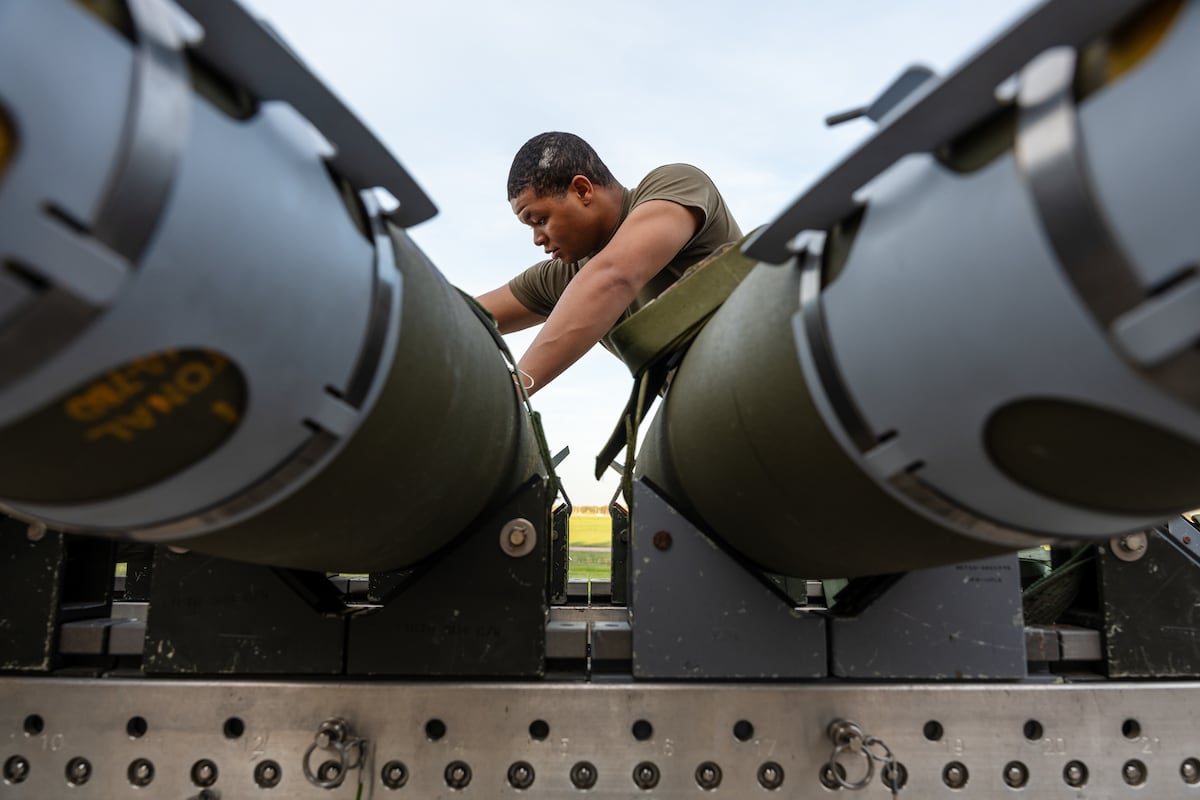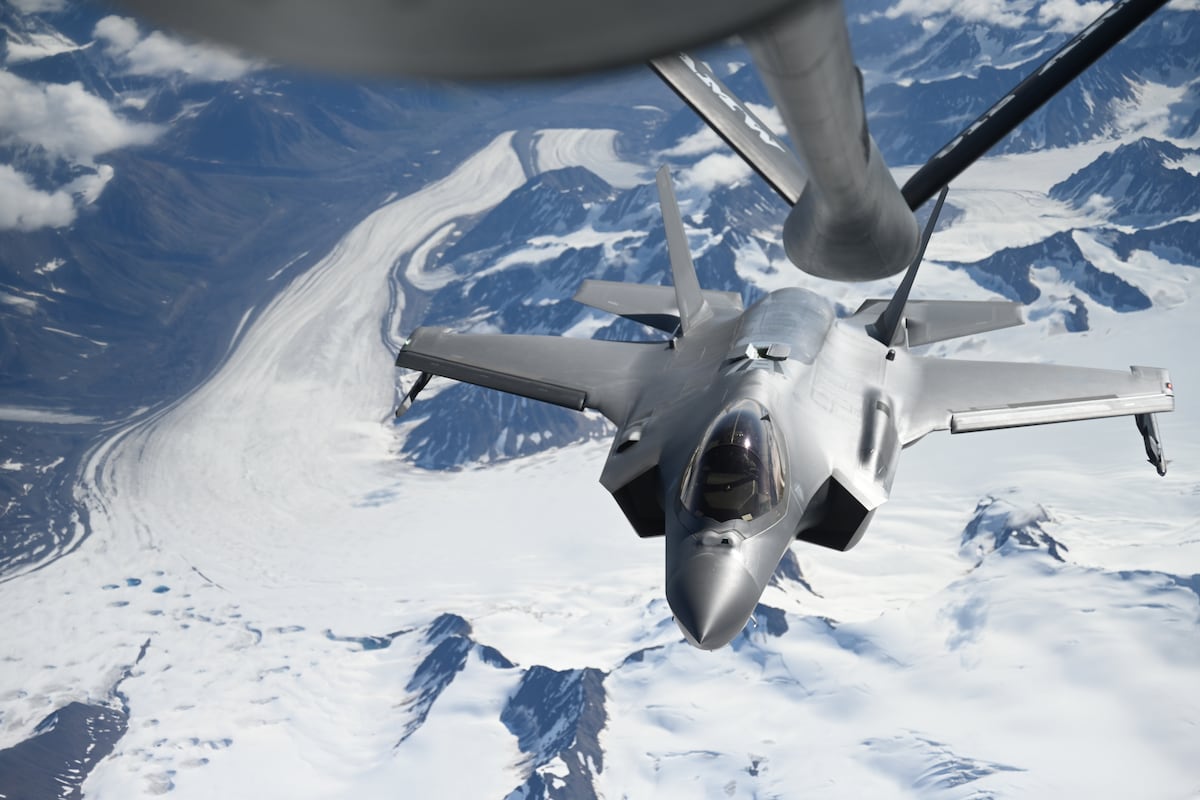Russian attacks on Ukraine are spiking, and Vladimir Putin’s troops are pressing a 3-1 advantage inside the partially-occupied Sumy region, where 50,000 Russian forces are trying to “wear us down with their numbers,” Kyiv’s top military officer Gen. Oleksandr Syrskiy told the Wall Street Journal Sunday.
Moscow’s forces also just invaded and occupied their first Ukrainian village in the east-central Dnipropetrovsk Oblast, Reuters reports, citing Russian state-run media Monday. Russian forces first entered the region in May, but have been unable to seize much territory there until this weekend. That ended with the occupation of Dachnoye, just inside the border with Donetsk, according to Russian officials.
Russian troops control only small parts of the Dnipropetrovsk, Sumy and Kharkiv regions. Otherwise, they’ve fully occupied the Crimean peninsula, as well as “more than 99% of the Luhansk region, [and] over 70% of the Donetsk, Zaporizhzhia and Kherson regions,” Reuters reports.
But Ukraine’s defense of Sumy “is coming at a greater human cost than necessary,” Ukrainian troops told the Journal. “It was the cruelest fight I’ve ever been in,” one 25-year-old platoon commander said. Russian forces “were attacking with infantry, drones, grenade launchers, machine guns, artillery, cluster munitions. Everything…We never had more than a five-minute break while they were regrouping.”
Ukraine also lost another F-16 pilot during another large barrage of drones, cruise and ballistic missiles on Sunday, President Volodymir Zelenskyy said on social media. The Washington-based Institute for the Study of War called it the “largest combined strike series of the war.”
The attack featured more than 470 drones and 60 missiles. Ukraine claims to have shot down 221 drones and 38 of those missiles; an additional cruise missile along with more than 220 drones were allegedly foiled thanks to Ukraine’s electronic warfare systems. But “while repelling the attack, our F-16 pilot, Maksym Ustymenko, died” after “destroy[ing] 7 aerial targets,” Zelenskyy said Sunday.
By the way: “Ukraine has now lost three F-16s since it began operating the U.S.-made jets last year,” Reuters reports. “Kyiv has not revealed the size of its F-16 fleet, but they have become a central and heavily used part of Ukraine’s defences.”
In case you missed it, last month we noted some of the ways Ukraine is shooting down missiles and drones—including with the F-16s—and how the U.S. could perhaps help them do so more efficiently, in a conversation with retired Navy Rear Adm. Mark Montgomery, now with the Foundation for Defense of Democracies in Washington. He recently returned from another trip to Ukraine to meet with defense officials.
“I can tell they’re conserving munitions when it comes to shooting down ballistic and cruise missiles,” Montgomery told us. And this is incredibly unfortunate, he observed, because “Ukraine just does not move the needle” in terms of press coverage and international attention anymore. But when it comes to shooting down drones and cruise missiles with F-16s, he said, “The plane was made for it. It’s fantastic.” (Others do not grade it so highly for lower-speed targets like some of the drones, Reuters noted Monday, citing Ukrainian military expert Roman Svitan.)
“But what they really need, though, is to not use AIM-9 Xs and guns,” Montgomery told The D Brief. “It’d be great if we gave them a system called the APKWS—it’s like a 2.75-inch rocket. If you remember the old Zuni rockets, I know that’s a long time ago, but they’re fired from like a barrel launcher that the plane carries. The rockets are laser-guided.” But most notably, “They’re cheap—in the $10,000 to $20,000 range.” The U.S. “could sell them those things and they’d have a great cost benefit on shooting down a cruise missile. It’s even cheaper than a Shaheed [suicide drone],” Montgomery said.
Zelenskyy on Sunday appealed directly to the U.S. for more air defense assets, writing in a social media post, “Ukraine needs to strengthen its air defense—the thing that best protects lives. These are American systems, which we are ready to buy. We count on leadership, political will, and the support of the United States, Europe, and all our partners.”
In just the past seven days, Zelenskyy said Russia has launched 114 missiles, 1,270 drones, and 1,100 glide bombs at targets across Ukraine. Targets have included industrial infrastructure, but also schools and ordinary residences. At least 42 civilians, “including a child, have died due to Russian strikes against [Kyiv alone] since the start of June 2025,” according to ISW, citing Ukrainian officials. More than 230 others, including 11 children, have been injured in these attacks. “Moscow will not stop as long as it has the capability to launch massive strikes,” Zelenskyy stressed to allies in his message Sunday.
Expert reax: “The increases in Russia’s strike packages in recent weeks are largely due to Russia’s efforts to scale up its defense industrial production, particularly of Shahed and decoy drones and ballistic missiles,” ISW wrote in its Sunday update. “Russia is continuing to use increasingly large numbers of drones in its overnight strike packages in order to overwhelm Ukrainian air defenses and enable subsequent cruise and ballistic missile strikes.”
Additional reading:
- “Russia unleashes its summer offensive with an army mired in problems,” the Washington Post reported Monday;
- “Russia pays young Ukrainians to be unwitting suicide bombers in shadow war,” the Guardian reported Monday;
- “Hungary says US lifted sanctions blocking expansion of Paks Nuclear Plant” from Russian state nuclear corporation Rosatom, Ukrainska Pravda reported Sunday, citing Hungarian source MTI;
- “Russia Base Metals Sales to China Surge, Signaling Deep Reliance,” Bloomberg reported Monday;
- “Russia Moves to Limit Exemptions for Military Conscripts,” Moscow Times reported Monday;
- See also, “How Conflicts Reshape Air Travel, From Iran-Israel Strikes to Russia’s War,” via the New York Times, reporting Monday.
Welcome to this Monday edition of The D Brief, a newsletter dedicated to developments affecting the future of U.S. national security, brought to you by Ben Watson and Patrick Tucker. Share your tips and feedback here. And if you’re not already subscribed, you can do that here. On this day in 1971, the Supreme Court ruled, 6-3, that the U.S. government could not block the New York Times or the Washington Post from publishing the Pentagon Papers.
Israel vs. Iran and Gaza
Developing: Iran is already repairing the Fordow Fuel Enrichment plant struck by U.S. forces last week, according to new satellite photos from Maxar showing heavy construction equipment near ventilation points the U.S. struck with GBU-57 bunker-buster bombs. The Institute for the Study of War said that Iran may be filling the craters, checking for radiation, and doing other assessments. The photos also show new road construction to other impact points.
Notable: The degree to which the United States “obliterated” the sites remains a topic of dispute.
Iranian officials downplayed the degree of damage on a private call that U.S. intelligence intercepted, according to the Washington Post. Satellite photos available after the strikes, plus preliminary reports from the Defense Intelligence Agency as well as the IAEA, suggest the damage likely set the Iranian program back by a matter of months. Meantime, White House officials have taken to berating journalists who report on findings and analysis that cast doubt on Trump’s description. In addition to Trump and Pentagon chief Pete Hegseth’s heated complaints directed at CNN and others last week, White House press secretary Karoline Leavitt told the Post, “It’s shameful that the Washington Post is helping people commit felonies by publishing out-of-context leaks.”
Update: Israel also successfully targeted 11 of Iran’s top nuclear scientists in the hours leading up to its own June 13th strikes, (which preceded the U.S. strikes) as part of a targeted assassination campaign worthy of Mario Puzo. The idea was to disrupt Iran’s nuclear-weapons-building expertise dubbed Operation Narnia. And they aren’t done yet, the Wall Street Journal reports. “A week after the June 13 attacks, Israel used a drone to kill another scientist who was being kept in what was supposed to be a safe house in Tehran.”
Panning out: Behind the back and forth strikes between Jerusalem and Tehran, two of the biggest beneficiaries of the Israeli decision to strike Iran could be Binyamin Netanyahu and Iranian Supreme leader Ayatollah Ali Khamenei, Josh Lederman writes for Defense One. “Even though both the Iranian regime and Israel’s perennial prime minister have been deeply unpopular for years, it’s worth considering the possibility that war may be the very thing keeping them in power—at least for now.”
Elsewhere in the region, Israel killed at least 60 people across Gaza in new strikes Monday, Reuters reports. The strikes come as Israeli officials are due in Washington, D.C. to discuss a new ceasefire proposal.
Around the Defense Department
The Air Force is using money previously given to its Sentinel ICBM program to convert their Qatari luxury jet into an Air Force One, Audrey Decker of Defense One reported Friday.
Shifting these funds won’t further delay the Sentinel program, but officials have been cagey about how much it will take to make the Qatari jet suitable for presidential use, as President Trump has ordered, and where they will get the money, Decker writes.
“There were dollars that were removed from the Sentinel program that were access-to-need in [fiscal] 2024 and that’s what was used to fund the program. We will ensure that those resources are there,” Air Force Secretary Troy Meink told lawmakers Thursday during a Senate appropriations defense subcommittee hearing. Meink also said he expects the retrofit will take “just short of a year” once the Air Force accepts the jet.
Meanwhile, multiple lawmakers also voiced concern over the Pentagon’s decision to cancel the E-7 Wedgetail radar plane in its 2026 budget proposal, due to cost increases. The Air Force was originally supposed to buy 26 of the aircraft, but amid new budget pressures, officials say they want to focus on space-based surveillance.
This was one of the “hard decisions” that had to be made in this budget cycle, and the service will have to figure out how to plug any gaps in coverage without the aircraft, Air Force Chief Gen. David Allvin said Thursday. Continue reading, here.
In ongoing budget developments:
And lastly: The Pentagon wants to simplify its classified networks so it’s testing out a secure, cloud-based network on a British aircraft carrier in the Indo-Pacific, Defense One’s Lauren C. Williams reported Friday.
Background: The Defense Department has been working to simplify use of and secure its networks using zero trust principles. But communicating between countries and their militaries often involves a complex set of networks and devices, which is a problem U.S. Indo-Pacific Command and the Army have spent recent years working on.
If successful, the prototype will be the foundation for a larger architecture on how the U.S. connects with allies and partners with the goal of being fielded broadly in the next two years, the Pentagon’s principal deputy chief information officer, said during Defense One’s Tech Summit on Thursday. Read more, here.
Additional reading:
Read the full article here








Leave a Reply